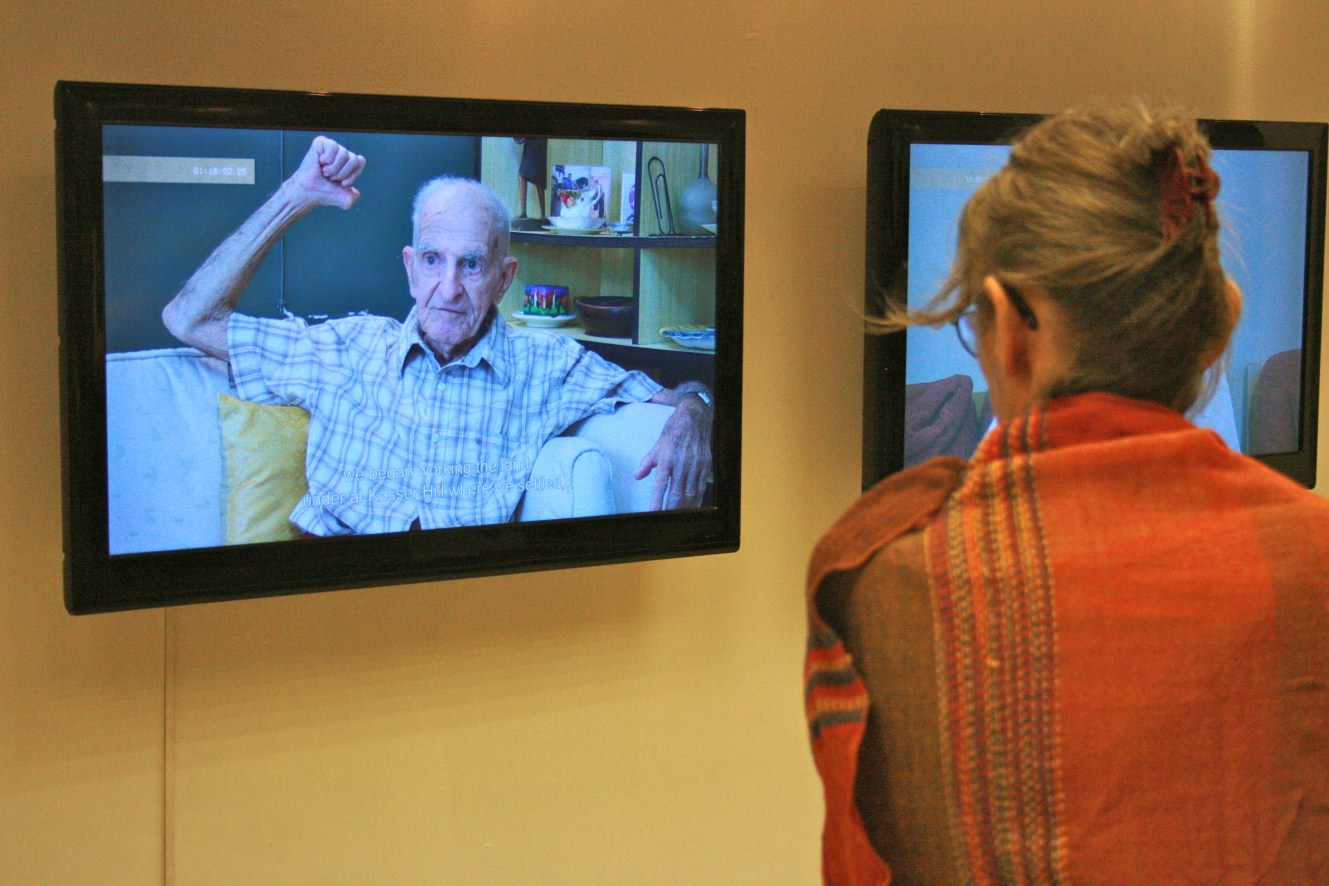At Zochrot's Visual Research Laboratory on Tuesday, October 2nd, 2012
Areej Sabbah Khoury:
Good evening. I work on the Palestinian colonial archive, and this exhibit at Zochrot is important.
Eyal Sivan:
First, I’d like to thank Debby Farber, who produced the exhibit and all the events connected with it, Erez Miller, without whom there would have been no photographs or editorial work, and Ronit Chacham, with whom I undertook to gather the series of testimonies some of which are shown here. This exhibit is the start of a project which must be carried out quickly because, unfortunately, the witnesses are disappearing. It is very unusual to hear – perhaps for the first time, not only regarding Palestine - testimony by perpetrators. Documentaries usually prefer to hear victims, because they give the victim an opportunity to speak. The perpetrators speak only grudgingly in court, before truth and reconciliation commissions, and in the literature. But documentaries almost always prefer victims to perpetrators. This exhibit is an attempt to document the accounts of bit players in the ethnic cleansing of Palestine, to give the perpetrators a chance to tell their own stories.
Ilan Pappe:
To me, as an historian who’s studied these topics, the interviews presented here represent a second round. I believe in oral history, and when I conducted research on the nakba I used testimonies extensively, but I regret that I wasn’t able to induce the Zionist combatants to talk. They responded stereotypically, repeated the usual narrative. I couldn’t shake the feeling that something must have been wrong about the story I was telling if they were so convinced of what they were saying. Add to this the huge effort still underway in the academy, among the political leadership, etc., arguing that whoever claims there had been ethnic cleansing is a self-hating Jew, etc. Nakba denial stemmed in large measure from the inability to obtain confirmation of the truth from those who carried it out. I usually gave up when they didn’t tell me anything, but Eyal persisted even when the witnesses who took part in the fighting told him to go home, that they won’t talk about what happened. He stayed and created an entire body of testimonies presented here for the first time. They spoke of these things for the first time, in part probably because they’re approaching the end of their lives, and perhaps also because they no longer feel this is their country. This exhibit supplements what we know in a way that no archive possibly could. One day it will also help us in the process of reconciliation. Reconciliation isn’t possible without also hearing from the criminals themselves, not only from the victims. I’m also part of the criminality. We’re all part of it, and it doesn’t matter how much we’ve invested in Zionism or in protesting against it – we’re part of the crime and must purify ourselves, for our own sake and for future generations.
Raneen Jeries:
I work for Zochrot collecting testimonies of Palestinian refugees and those who were uprooted. Uprooted Palestinians are those who were expelled from their towns and villages but remained in Israel; today they number some 350,000. I’ve seen some of the testimonies exhibited here; it was very difficult for me, emotionally, because when I gather testimonies from Palestinians they say “Al Yahud” (the Jews), not “combatants,” and now I hear the “Yahud” speaking. I was angry, but also glad. These combatants speak of and admit to many things that the state and the educational system try to silence. The refugees talked about them, and now the combatants talk of them also. Here are some examples. The combatants frequently employ declensions of the infinitive “to expel.” That’s not something you would expect. Many times I heard them say “were expelled,” “to expel.” The Zionist narrative says “fled;” I think saying “expel” is an extremely important admission. You hear words like “we got rid of,” “we threw a hand grenade,” “we blew up the house so they wouldn’t return.” My late grandmother was uprooted from Haifa. My family left in 1948, to relatives in Nazareth, where there was no fighting. They were told they could return in two weeks, but when they went back to their home to collect their belongings they found it had been destroyed. The Jewish testimonies supplement that account. I also noticed that the testimonies referred to the Arab Liberation Army. The references are very infrequent, in contrast to the “official” narrative in which that force plays a prominent role, apparently much more than it really had. The Liberation Army is referred to in the refugees’ testimonies not because it fought but because it was absent, because it didn’t fight – they refer to it angrily.
Eyal Sivan:
It’s important to mention the two video monitors at the entrance showing Israeli cinematic representations of the nakba. They reflect denial, express the difficulty of showing the land other than according to the Zionist narrative according to which it was a desert. You see the remains of the Palestinian villages during wartime, as if the land had been desolate even before it was destroyed. Another video monitor presents testimonies by members of the second and third generation – including children of combatants – testimonies by those who heard stories about the nakba at first hand, “hearsay” testimony. There’s also a video monitor showing testimonies filmed in 2005, then twenty new testimonies, and on a big screen the beginning of the extensive internet project of the joint archive that shows there’s no essential difference between the testimony of the perpetrator and that of the victim.
Areej Sabbah Khoury:
One of the most interesting aspects of the Zionist archives is their rewriting of history. The historical consciousness of the Jews was fully developed prior to their arrival in Palestine; the archives are full of such material. Ben Gurion was one of the principal rewriters of this colonial project, in his diary as well. Therefore, it’s impossible to understand the reality that the Zionist project created in Palestine without the information provided by testimonies in the archive (this exhibit). One of the first Israeli research projects that used oral testimonies was Teddy Katz’s work on Tantura, about the role of Jews in causing the nakba. There haven’t been any studies since that combine oral testimony with archival material. I’ve been to about eight Israeli archives. I saw that many files had pages “missing” Much can be learned from these archives, but in the absence of oral testimonies it is extremely difficult to fully understand the history of Palestine and its colonial experience. Not only testimonies about violence, such as those presented here, are important, but also about relations between Jews and Arabs prior to and during the nakba. Research on the relations between Jews and Palestinians should not be based solely on archives. The focus on the testimony of victims, the obsession with gathering such testimonies, did not happen in Palestine. This exhibit shows that the Palestinians were doubly victims: of the nakba, and by their absence from the discussion of what occurred. It’s as if only the Jewish combatants talk about what happened; the reality is legitimized. Thus the testimony of the victims is ignored. That’s why it’s important to leave room for the victim, not to expropriate his narrative. Because the perpetrator describes an experience which is different from that of the victim. The Jews have responsibility for, and the privilege of, collecting these testimonies but the Palestinian must be allowed to speak his piece, to retain his right to talk about the past. It’s also important for Palestinians to access these testimonies. Ilan Pappe writes that, in a certain sense, the Palestinians still depend on the government archives, but there are Palestinian projects attempting to gather oral testimonies. But it’s difficult to reach the victims. Palestinians in Israel are relatively privileged, because we have access to more places in Israel. But Jews are clearly more privileged when it comes to presenting the history.
Eli Aminov:
I want to object to the term “reconciliation,” because the “Truth and Reconciliation Commissions” served as a cover for subordinating the blacks to the whites. We should speak of change, not reconciliation. There can be no reconciliation between the Zionist movement and the dispossessed native people; the Zionist movement must be replaced by something else, a democratic place for everyone. In South Africa there was a tragedy and here there’s a farce. Arab archives disappeared, were either deliberately destroyed or their location is unknown.
Nitza Aminov:
I don’t understand the business about victims. Who’s supposed to free the Palestinians from their victimization? I think it’s their responsibility.
Areej Sabbah-Khoury:
I’d rather not get into that. I said that there’s a role for a project of Jews who want to build a different future, a responsibility to gather testimony and create an alternative archive. Would that we had already achieved reconciliation. It’s possible to learn a great deal from South Africa about a post-colonial archive which includes the victim’s voice.
Question:
Do any of the combatants express remorse in their testimony?
Eyal Sivan:
We tried to avoid interpreting what the witnesses said. I’m a pupil of Hannah Arendt: intentions, emotions, feelings don’t matter in politics – only actions. Phrases in the testimonies appear repeatedly, independent of the speaker’s gender, battalion or unit: “We did to them what they intended to do to us.” That’s a sentence formulated at the time and then repeated by the politruks of the military units. People speak lightly of murder and expulsion, but there’s one thing they deny – looting, because it’s “immoral” to take for oneself, unless it was in order to give pianos to the kibbutzim. One interesting example is the testimony of Mora'leh (Mordechai) Bar On about the order he received to prevent refugees from infiltrating back to their localities. He says that he’d carry out that order today also. One of the witnesses, Yerach Kahanovitz, fired the shell into the mosque in Lod. He says that it’s 98% certain that there are things you do because you have no choice, that you’re not proud of, and there are things that we may be forced to do again and it’s not worth revealing how we did them. This indicates that the nakba still continues today.
Ilan Pappe:
Unlike Eyal, I am interested in regimes of justification, because justification is what built the Zionist left, and the opposite may also be true – the Zionist left constructed the justification. These witnesses represent the Zionist left. They know that the Zionist left, not the Zionist right, carried out the nakba. The right isn’t busy justifying itself; it’s “right.” The left is busy justifying itself; that’s what the “peace process” is built on. In English you call this a “Common Archive”, which in English means “shared,” but also “ordinary” as in “a common man.” The accounts of these ordinary men aren’t necessarily only local stories, but the justification and self-righteousness of the left are unique – they combine the need to weep with the need to be right. You can hear and see that in the testimonies of these witnesses, though not in all.
Areej Sabbah-Khoury:
Zionist history was written by the Zionist left. From a Palestinian perspective, these testimonies add nothing new. Walid Khalidi wrote about” Plan” D long before Benny Morris. This project is important for Jews because it allows them to learn about their past from those who created the reality in which they live.
Question:
I’m familiar with testimony about Deir Yasssin. Is the prominence given to what happened at Deir Yassin due to the fact that it was the right that was responsible?
Ilan Pappe:
Immediately following the Deir Yassin massacre, Ben Gurion apologized to King Abdullah, for two reasons: to show that the perpetrators were marginal, right-wing extremists, and to publicize the massacre so other Palestinians would flee. Recently Zochrot publicizedproclamations which the Haganah issued and distributed in the villages; Deir Yassin figured in them prominently to frighten the residents and make them flee. Ben Gurion understood that ethnic cleansing wouldn’t be possible without massacres, so they used Deir Yassin, which served the purpose very well.
Esti Tzal:
How old were these witnesses in 19’48?
Eyal Sivan:
Between 17 and 22. Most or all of them were kibbutzniks, from settlement training groups or from the Palmach and HaShomer HaTza’ir. The village files project began in the thirties. Youths 14 and 15 years old who were being trained in reconnaissance and topographic skills would tour villages and prepare files on them. That’s why the question of how far back you should go when questioning the witnesses is relevant. Those people are very old today, but when they tell about themselves it’s as if they’re youths talking.
Raneen Jeries:
Two weeks ago I interviewed a woman about the massacre in Lid (Lod). Her husband was one of the men who collected the bodies but weren’t permitted to bury them. I told her about the upcoming tour of Lod and about one of the combatants who’ll speak about what happened. She looked at me in both surprise and apprehension and asked what he said. She though he’d deny there had been a massacre. I told her that he’d recounted everything and she asked whether he’s sorry. I don’t think he has any regrets. I don’t feel that people truly have regrets because the holocaust always serves as a backdrop, acting as a barrier to taking responsibility. The testimonies of refugees take us back to the period before the nakba. As far as the combatants are concerned, the story begins and ends in ‘48. But for the Palestinians, ‘48 is just the beginning of the catastrophe. One woman spent half an hour telling me about the difficult journey from Lid to Ramallah after they were expelled. I always feel that, for Israelis, the story ends in ‘48, but the nakba isn’t over and we must consider what that means.
Areej Sabbah-Khoury:
The nakba didn’t begin in ‘48. It’s a process that began earlier.
Eyal Sivan:
I myself never heard the witnesses use the holocaust as a justification. But what’s surprising is that some of you make an analogy to the holocaust. That’s surprising in view of the discourse which prohibits any reference to the holocaust. In Lod, during “Operation Danny,” the refugees were expelled by the light of day, not at night. It reminded some of the combatants of Jews who were expelled during the holocaust. There’s a tendency to place the onus for atrocities on the new immigrants and the holocaust refugees, as if they were responsible for them. But they weren’t – most were carried out by the Palmach and by veteran settlers.
Eitan Bronstein Aparicio:
An important part of this exhibit is the large number of testimonies that have been gathered and made publicly available in a single location. Some of the testimonies were published in the past, but never as part of such an impressive grouping. The medium is also very important because video is a very effective way of transmitting the information the witnesses provide here publicly, aided by the curators and in the context of this space. I was moved to see Amnon Neumann here this evening, one of our well-known witnesses, who testified publicly at an event held by Zochrot. No other testimony about the nakba has been presented publicly, openly, and it’s been viewed thousands of times on YouTube. This exhibit makes all the testimonies public, accessible to those here this evening and those who will come in the future. It’s important to us that people visit the exhibit and hear the testimonies. We want groups to come; I ask you to help us organize groups of families, from workplaces, pupils, students, colleagues. We also invited the Palmach Museum and Haganah Museum to visit the exhibit. On Friday, October 12, we’ll conduct a tour of Lod in which one of the witnesses in the videos will participate, along with refugees from the town who’ll tell their own stories. We’ll also hold a series of events in connection with the exhibit: films, discussions, a seminar for educators, a workshop about gathering testimonies. The testimonies will subsequently appear on an internet site currently under construction.
Ruti Bronstien:
What do you mean when you say “the nakba isn’t over”?
Question:
There’s no statute of limitations on crimes against humanity. I’m happy you created this exhibit and ask myself why there’s no international court that addresses this issue. Because it’s much more than a topic for an exhibit; the crime still continues here. Zionism is going to be put on trial in Buenos Aires; the trial will be held in the National Library. It may have an effect on the conceptions of Jewish communities around the world and on their support for Israel.
Ilan Pappe:
Next week I’m going to the “Russell Tribunal” in New York, to testify before judges who will address the nakba and its continuation. The forum also hears testimony in the field during its visits. The state of Israel is the defendant, not specific individuals. There’s a very important activity by human rights judges in Britain, Australia and the United States as a result of which Israeli generals can’t travel abroad because they could be arrested. There are efforts to transform this energy into judicial activity. But there must be a thorough legal consideration of the subject of crimes against humanity – ethnic cleansing is a crime against humanity; that Israel carried out ethnic cleansing is undeniable.
Raneen Jeries:
When I’m asked what complaint I, as a Palestinian, have about Israel, I reply that as long as the policy toward us is one of apartheid, land confiscation, murder, home demolition like in Al-Araqib and Umm al-Khiran, as long as the uprooted have not returned to their lands, I think the nakba continues.
Eyal Sivan:
One of the witnesses tells about the massacre that followed the Lod massacre. Palestinians who buried the bodies were shot. He didn’t want to talk about it because he was afraid of the Shin Bet, who’d called him for interrogation in the past (a decade ago). He said that his experience of being a refugee from Europe became intertwined in his mind with what Palestinian refugees must have experienced.
Areej Sabbah-Khoury:
The Nakba of the Palestinian archives also continues because Israel destroyed the PLO archive in Beirut in ‘82. The Nakba is a zero-sum game, in which Zionism views Jewish existence in the country to be at the expense of the Palestinians. That’s why it erases localities and expels people, and also erases all memory.
Ruti Bronstien:
By mixing up the horrors that occurred in ‘48 with what’s happening today, I think you minimize what occurred then, which was much more important.
Question:
Do you know whether the act of testifying had any effect on the witness?
Question:
There are now attempts to expel the Jahaleen. They were expelled in ‘51, not in ‘48. Do you have any testimonies about that?
Eyal Sivan:
The project isn’t over yet. We began gathering testimony in 2005, together with Ronit Haham, and didn’t publish them until now because we didn’t know how to continue. Last summer we collected additional testimonies after receiving assistance from our universities in England. Every member of the Palmach has been interviewed on various occasions; what makes this exhibit different is what the interviewer asks, how he approaches the interview. The difference lies in asking questions you would ask perpetrators, not those you would ask heroes. The interviewer has to make themselves apparer a little dumb, as if they don’t really understand, so that the explanations provided by the witness will be explicit.
Ilan Pappe:
The argument isn’t over whether people were expelled, but whether the expulsions were planned in advance. Because if it was a result of the war, then it’s “OK” from the standpoint of international law, because during wartime people are expelled, but if the testimonies contain additional information proving that there were systematic plans it becomes a crime against humanity second only to genocide. I insist on the term “ethnic cleansing” because what involved isn’t just a catastrophe, a disaster, something terrible that happened, but ethnic cleansing, a term that identifies a perpetrator and a victim. A national struggle can address the Nakba. But only a judicial system can address ethnic cleansing, which is why we must not abandon a judicial discourse. These witnesses have finally provided systematic information about the chain of command from David Ben Gurion on down. That’s something no archival document can provide, as with the holocaust. Once you hear it from the combatants, that’s proof Ben Gurion planned it. That’s the most significant part: we’re talking about a plan, a project, an undertaking, and it’s continuing. One that from a moral and legal standpoint is completely illegitimate.
Question:
Did people know why they were being interviewed?
Eyal Sivan:
That’s a gray area. They knew it was a non-Israeli university research project. One time the son of one of the interviewees came and objected to the interview, but we ended as friends.
The questioner:
But you’re interviewing without providing any context to the interviewee, which is ethically problematical.
Eyal Sivan:
We didn’t make judgments while editing the interviews. I’m against asking people to sign a release, because the context changes and sometimes a person may regret something they said, so the signature doesn’t really matter. We’re the ones wielding the editorial scissors. We told the witnesses that the project deals with memory, that it will be displayed in public, but won’t be shown on television.
Areej Sabbah-Khoury:
The interviewer has an ethical obligation not only to the perpetrators but also to the victims. There’s an historical context that must be considered when we do historical research. I’m not interested in a trial. But I’m afraid there will be another transfer, because some of the witnesses say they’d again do what they did. I want the perpetrators to learn about the past so it doesn’t happen again.
I want to thank the discussants and everyone who came. You have time to view the testimonies – the exhibit will be on display for about two and a half months.
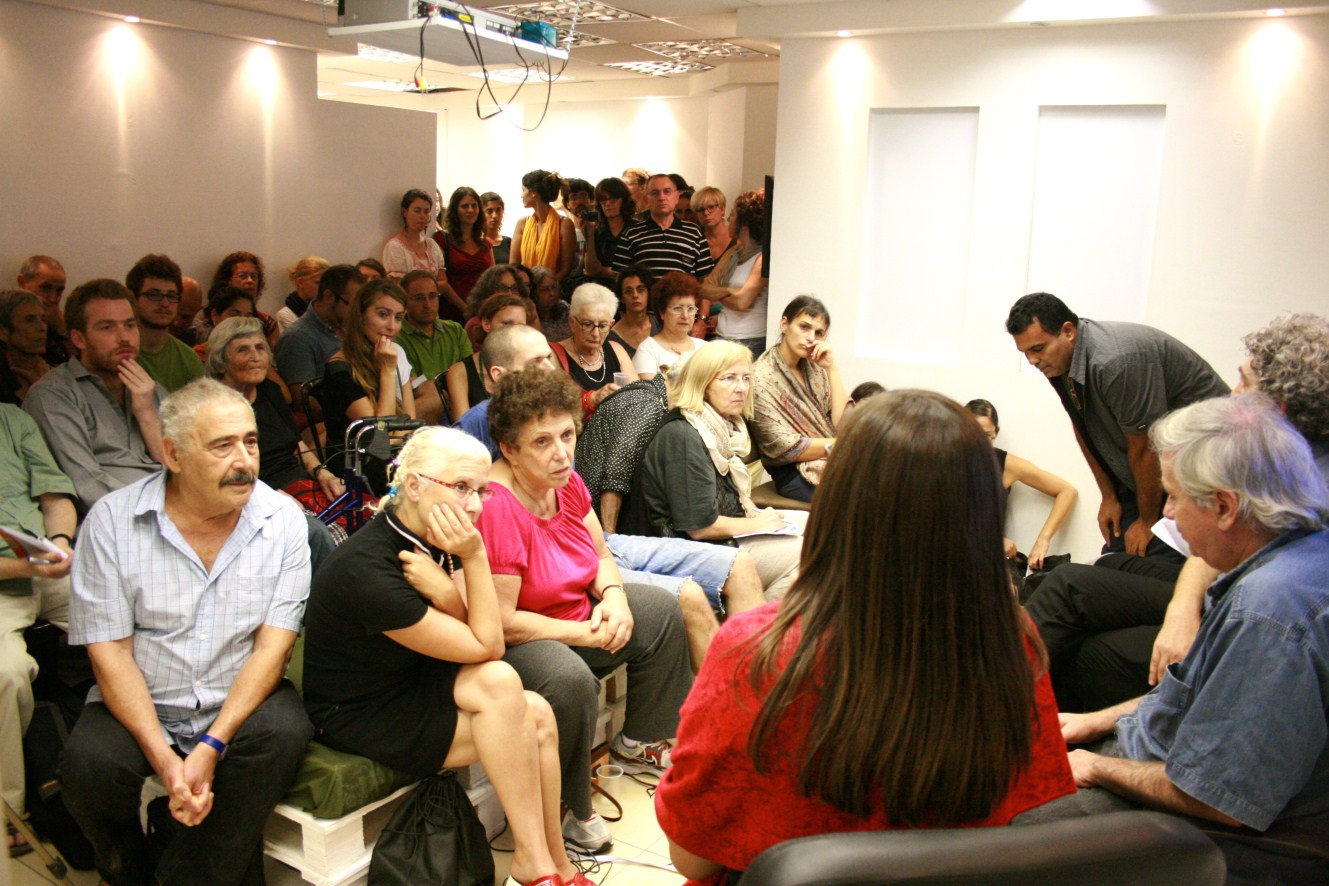
לקראת ארכיון משותף: עדויות מצולמות של לוחמים ציוניים מ-1948 / Towards a Common Archive: Video Testimonies by Zionist Fighters in 1948
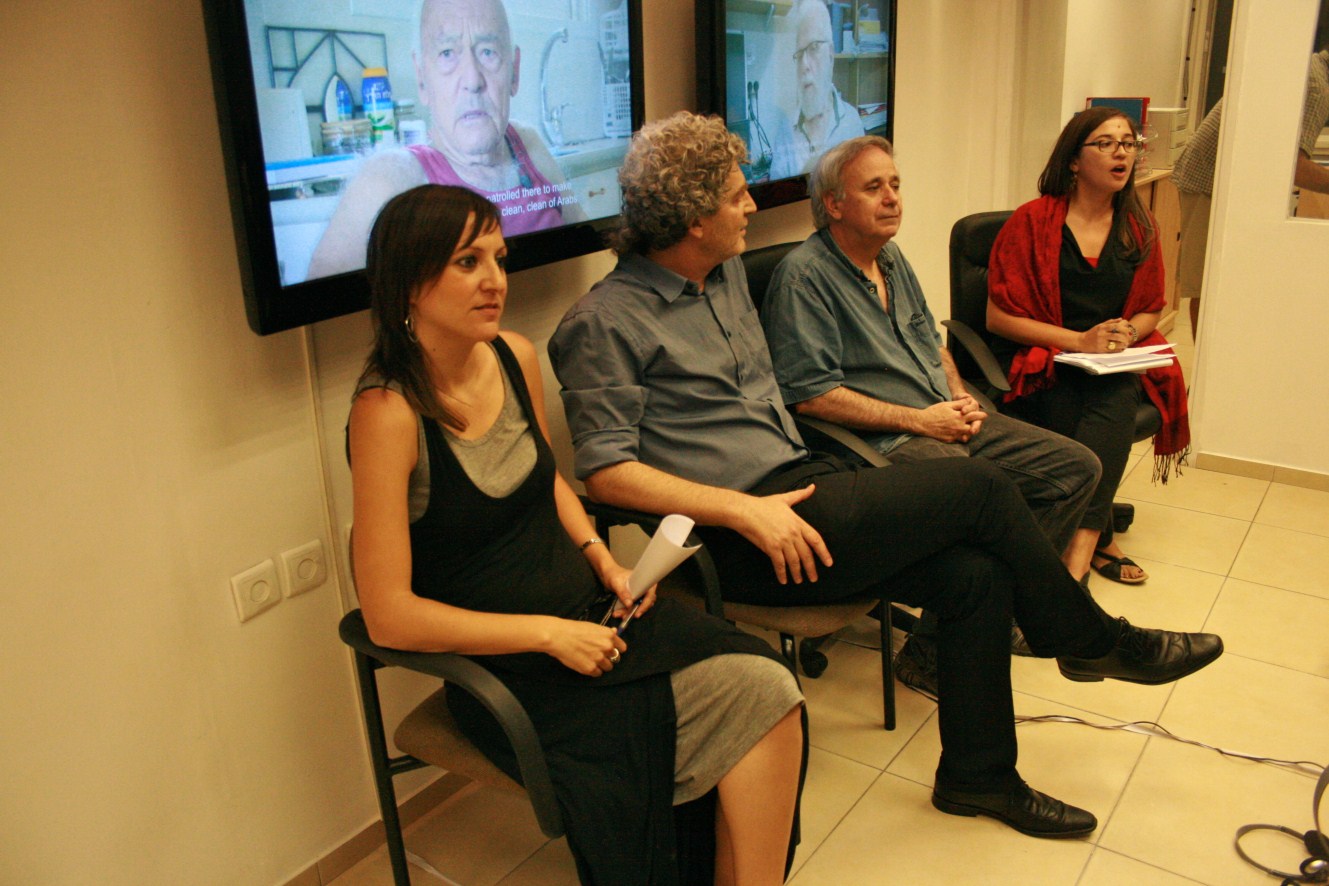
לקראת ארכיון משותף: עדויות מצולמות של לוחמים ציוניים מ-1948 / Towards a Common Archive: Video Testimonies by Zionist Fighters in 1948
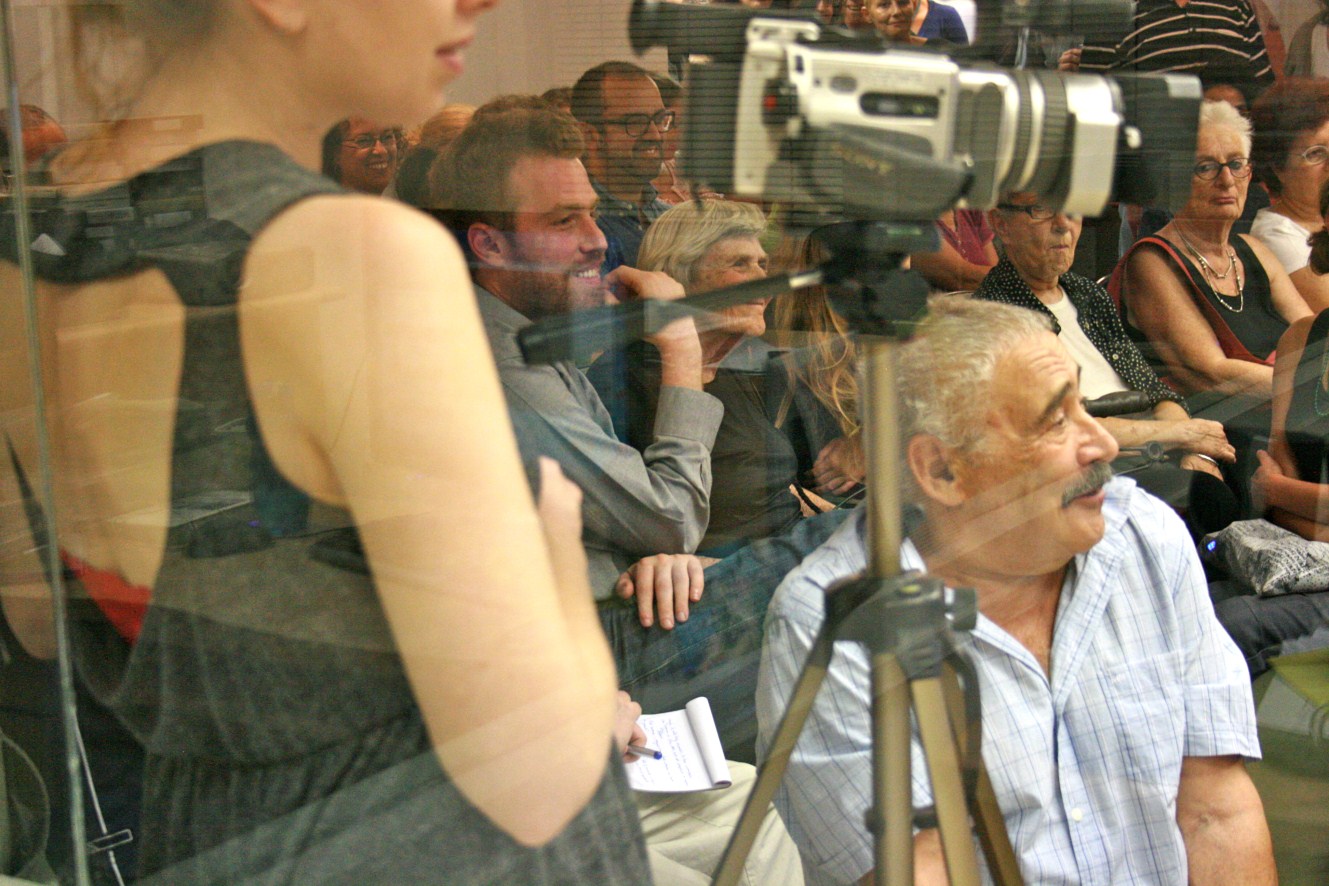
לקראת ארכיון משותף: עדויות מצולמות של לוחמים ציוניים מ-1948 / Towards a Common Archive: Video Testimonies by Zionist Fighters in 1948
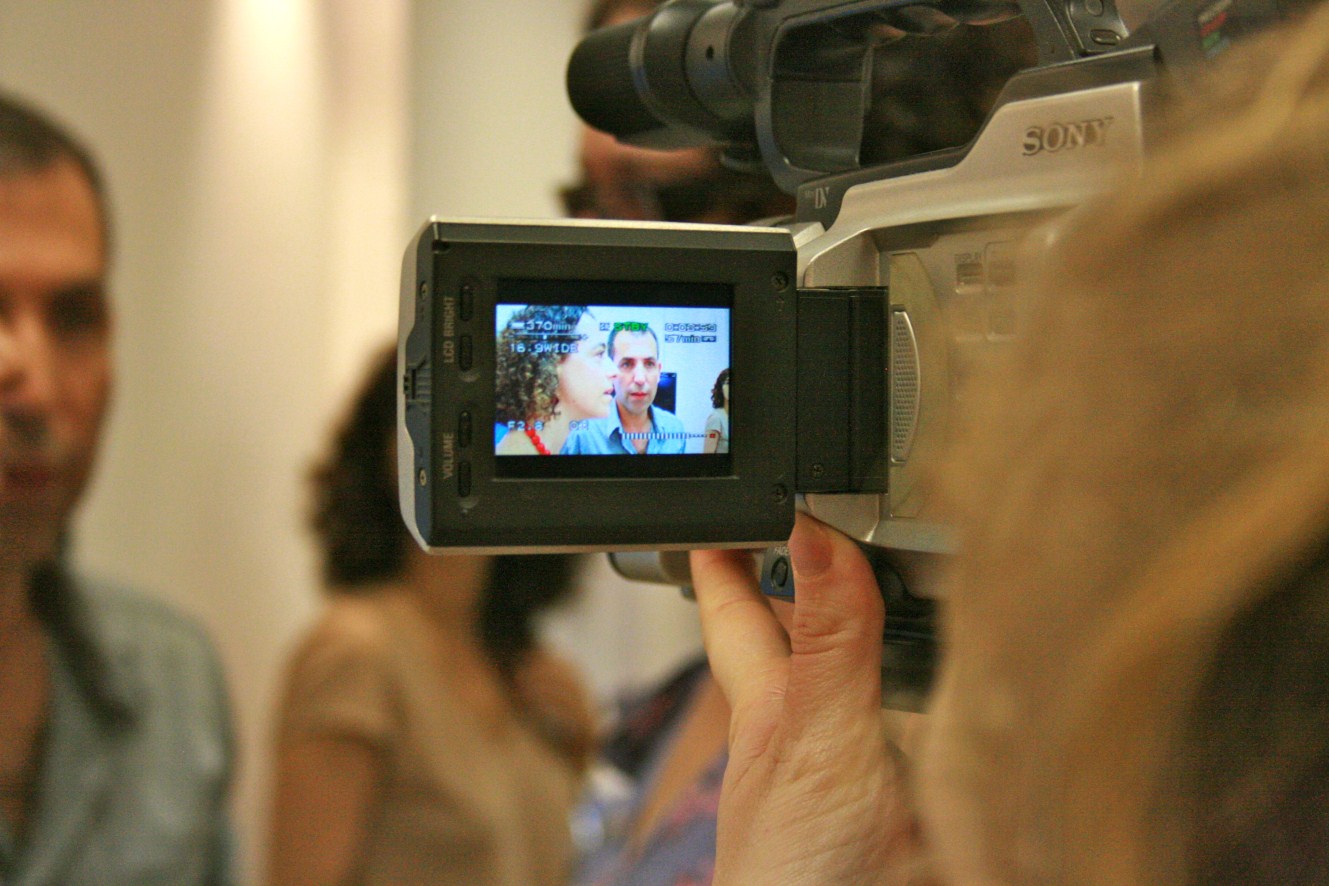
בפתיחת התערוכה לקראת ארכיון משותף / At the opening of the exhibition Towards a Common Archive
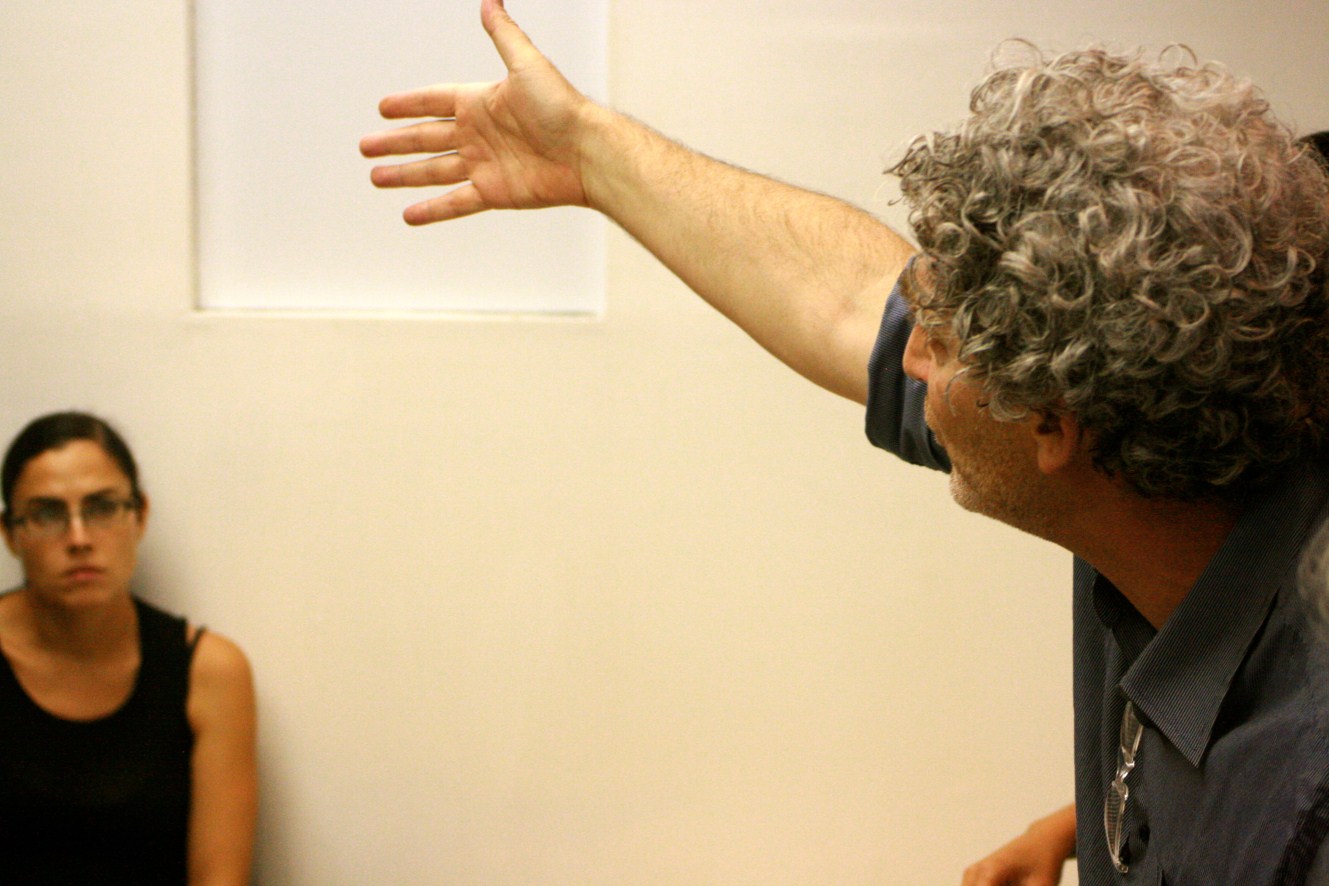
לקראת ארכיון משותף: עדויות מצולמות של לוחמים ציוניים מ-1948 / Towards a Common Archive: Video Testimonies by Zionist Fighters in 1948
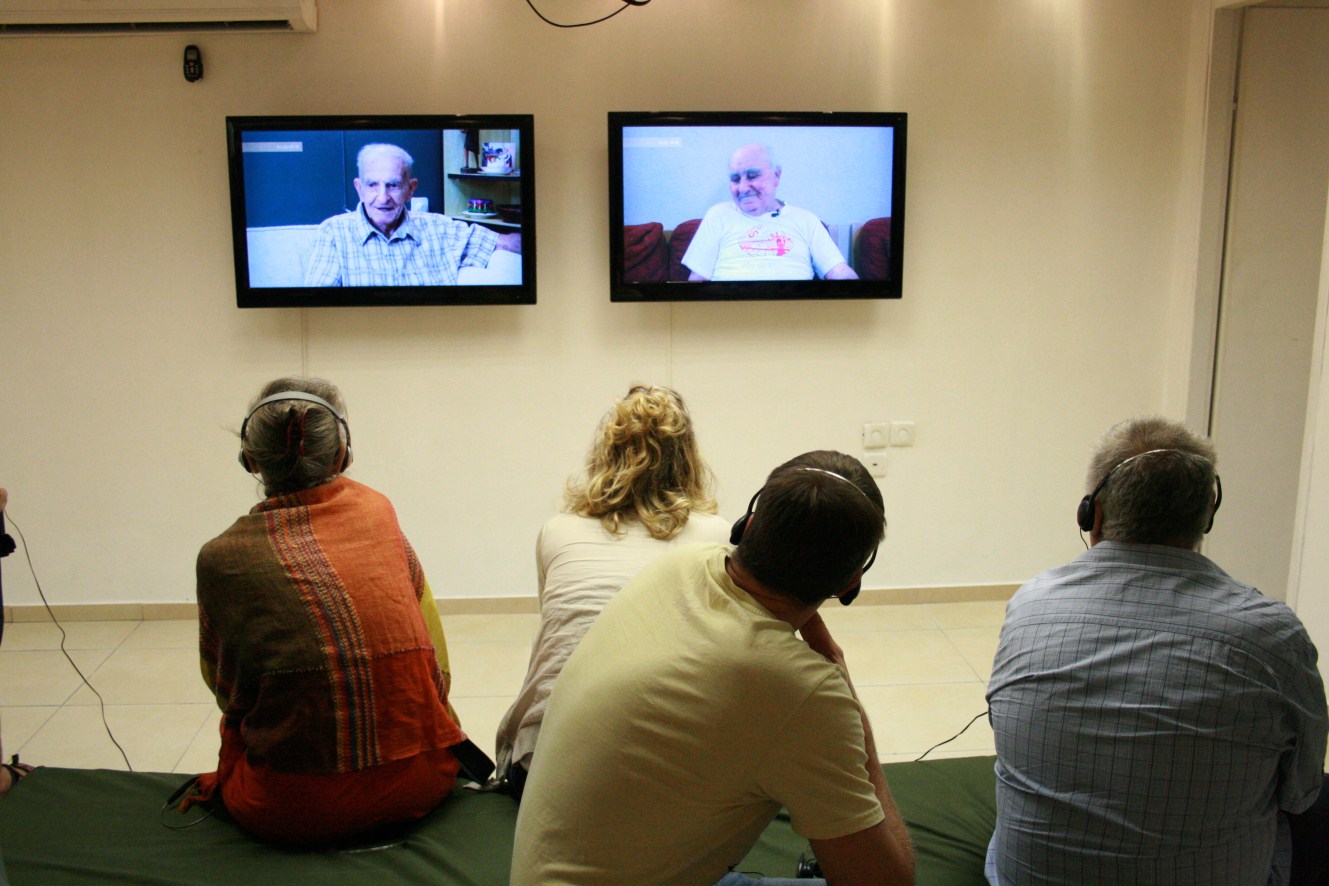
לקראת ארכיון משותף: עדויות מצולמות של לוחמים ציוניים מ-1948 / Towards a Common Archive: Video Testimonies by Zionist Fighters in 1948
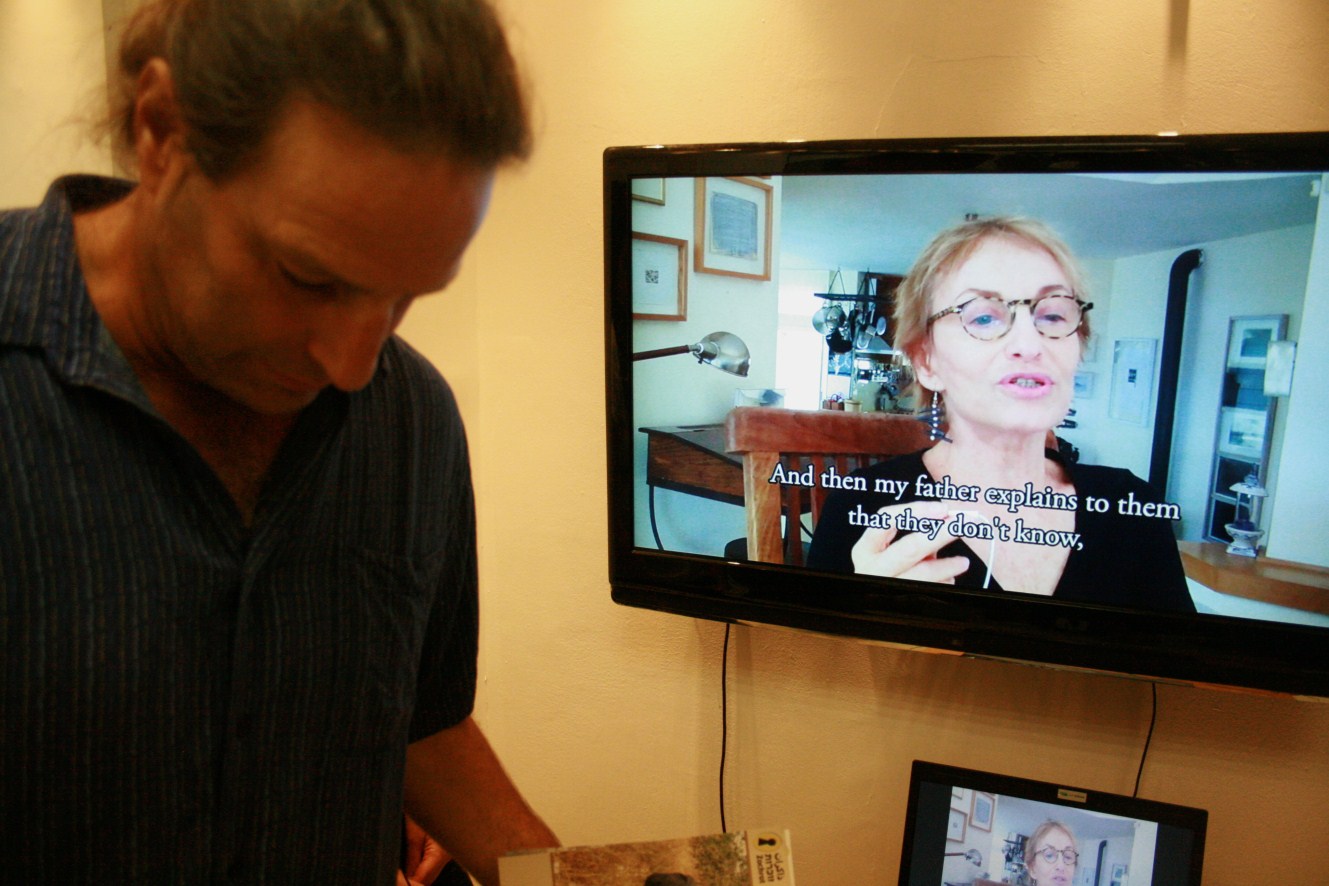
לקראת ארכיון משותף: עדויות מצולמות של לוחמים ציוניים מ-1948 / Towards a Common Archive: Video Testimonies by Zionist Fighters in 1948
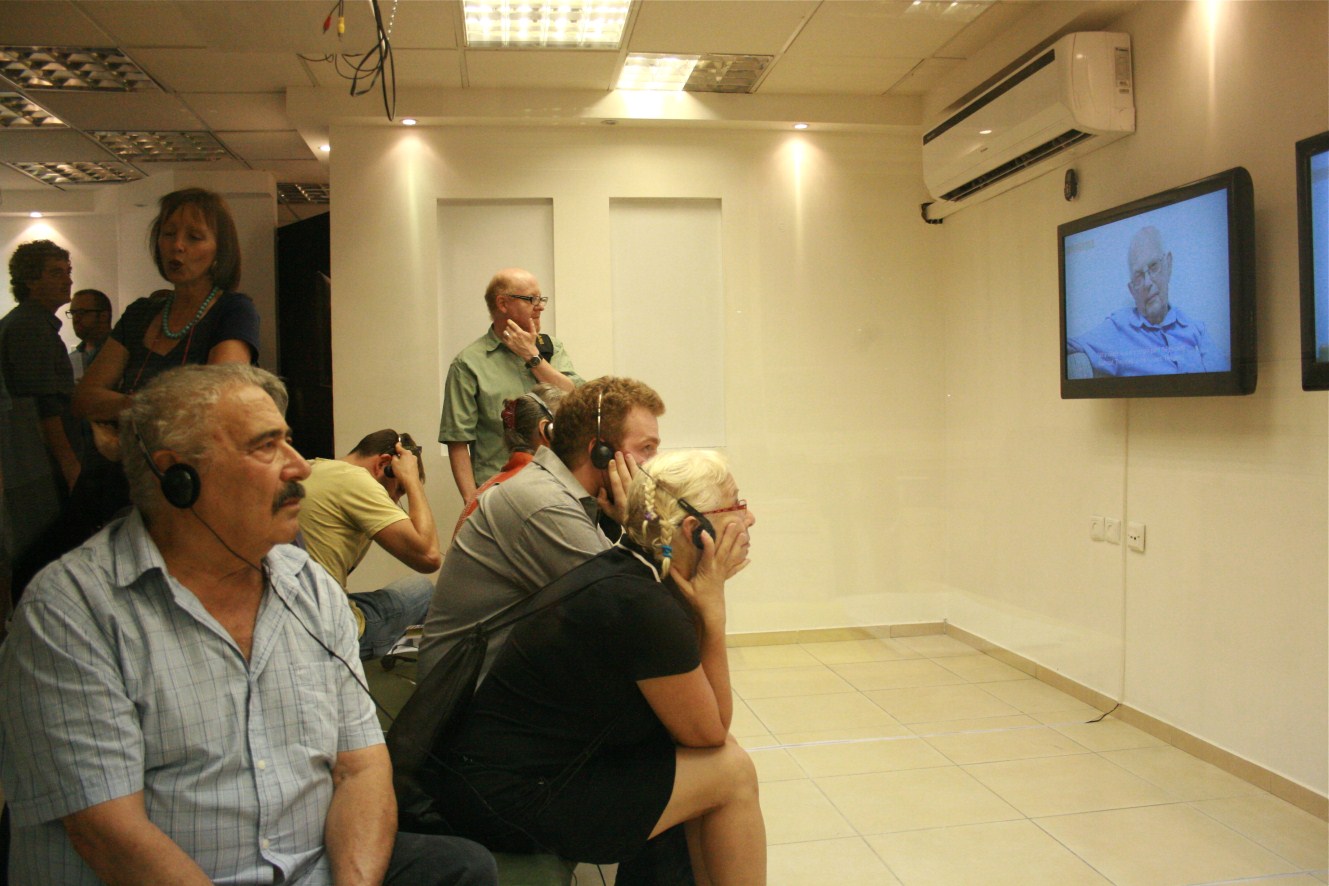
לקראת ארכיון משותף: עדויות מצולמות של לוחמים ציוניים מ-1948 / Towards a Common Archive: Video Testimonies by Zionist Fighters in 1948


